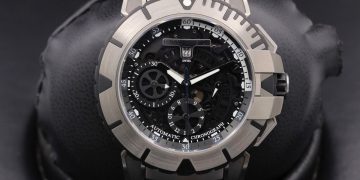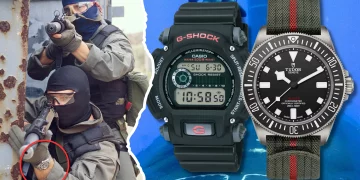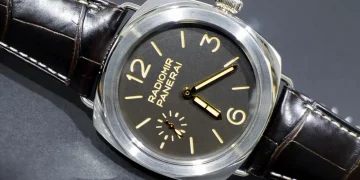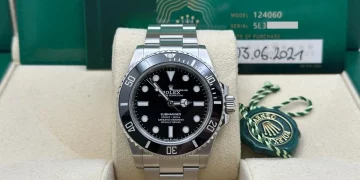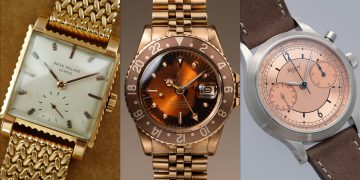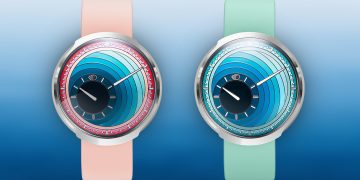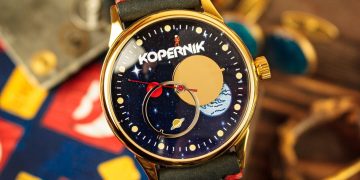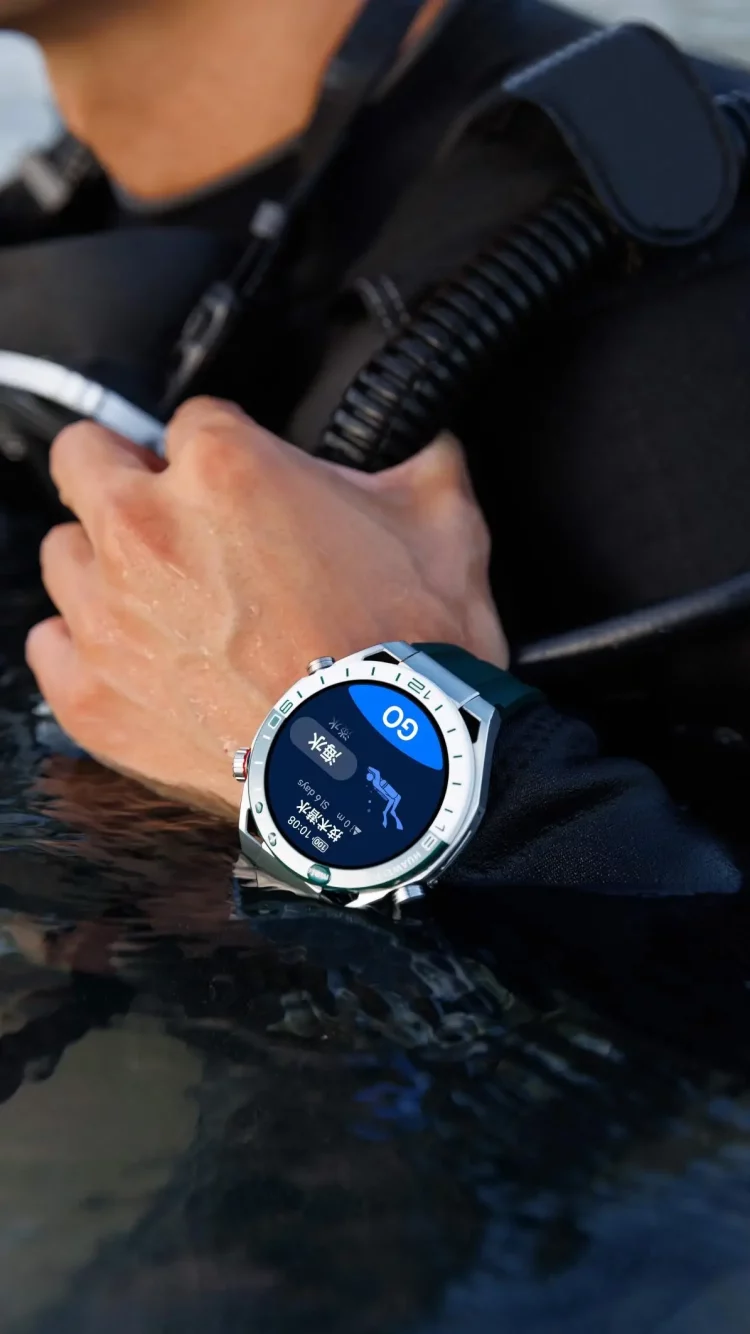Introduction:
When purchasing a watch, one of the most important features to consider is its water resistance. Whether you’re a professional diver, an avid swimmer, or simply someone who wears their watch in daily life, knowing your watch’s water resistance capabilities can help protect it from moisture damage. But a common concern for many watch owners is whether a watch’s water resistance diminishes over time. After all, watches are not made to last forever, and exposure to wear and tear, aging components, and environmental factors can affect their performance.
This article aims to answer the crucial question: Does a watch’s water resistance diminish over time? We’ll explore the factors that influence a watch’s water resistance, how to maintain it, and when to seek professional servicing to ensure that your watch remains protected.
1. Understanding Water Resistance Ratings
Before discussing how water resistance may change over time, it’s important to understand the water resistance rating of your watch. This rating indicates how much water pressure the watch can withstand and is usually printed on the watch’s caseback or specified in the product manual. Common water resistance ratings include:
- 30 meters (3 ATM): The watch can handle light splashes, rain, and sweat. It is not suitable for swimming or submersion.
- 50 meters (5 ATM): The watch can handle splashing and short immersion, such as washing hands or light swimming.
- 100 meters (10 ATM): Suitable for swimming and snorkeling, but not for diving.
- 200 meters (20 ATM) and above: This is the typical rating for watches made for scuba diving, able to handle high water pressure during deep dives.
It’s important to note that water resistance does not mean your watch is waterproof, as no watch is entirely impervious to water.
2. Factors That Affect Water Resistance Over Time
2.1 Wear and Tear of Gaskets and Seals
One of the primary reasons a watch’s water resistance diminishes over time is the natural degradation of the gaskets and seals that keep water out. These components are made of rubber or silicone, and as they age, they can lose their elasticity, dry out, crack, or shrink. This is particularly true if the watch is exposed to extreme temperatures, moisture, or chemicals, which can accelerate wear.
- Temperature Fluctuations: Both heat and cold can affect the flexibility of gaskets, causing them to become brittle and ineffective.
- Moisture Exposure: If the watch is frequently exposed to water, especially saltwater or chlorinated water, the gaskets can deteriorate faster.
2.2 Corrosion of the Case Back or Crown
The case back and crown are critical components that affect water resistance. If the crown or pushers are not securely screwed in or are damaged, water can easily seep into the watch. Likewise, the case back, which is usually screwed down tightly, can suffer from corrosion over time due to exposure to moisture or chemicals. Even a slight crack in the case back can compromise the water resistance of the watch.
- Corrosion: Exposure to salty air (especially if you live near the coast) or prolonged submersion in water can cause corrosion on the metal parts, which weakens the structure and seals.
2.3 Impact from Accidental Drops or Bumps
While water resistance is largely dependent on the seals and gaskets, it can also be affected by physical impacts. Dropping your watch or accidentally bumping it against a hard surface can damage the seals, case, or crown, leading to a compromised water-resistant seal. Even minor damage can cause the seals to lose their ability to keep water out.
- Case Damage: If the watch case is dented or scratched, it can disrupt the integrity of the seals, allowing water to enter. Impact can also cause the crystal to become dislodged, further increasing the risk of water penetration.
2.4 Aging of the Watch Movement
For mechanical watches, prolonged exposure to moisture without proper sealing can cause the internal movement components to rust or corrode, potentially damaging the accuracy of the watch. Similarly, quartz watches can suffer from electrical failures if moisture gets inside the case. Over time, the internal movement’s lubrication can degrade, which can cause additional wear and tear on the seals and gaskets.
3. How Can You Maintain a Watch’s Water Resistance?
While time can affect a watch’s water resistance, there are a few proactive steps you can take to maintain its protective capabilities and extend its lifespan.
3.1 Regular Inspection and Servicing
To ensure that your watch continues to be water-resistant, it’s important to have it serviced regularly. The most common reason water resistance diminishes is the wear of the gaskets and seals, but a professional watchmaker can replace these components and restore the water resistance to its original level.
- Servicing Interval: It’s generally recommended to have your watch serviced every 3 to 5 years, depending on the brand and the level of exposure to water. During the service, the seals and gaskets will be inspected, and if necessary, replaced.
- Water Resistance Testing: A professional service often includes a water resistance test, which simulates various pressures to ensure the watch is still sealed against moisture.
3.2 Rinse After Water Exposure
If you expose your watch to saltwater, chlorine, or any other harsh chemicals, be sure to rinse it thoroughly with fresh water afterward. These substances can weaken the gaskets over time and cause corrosion, so a simple rinse helps to preserve the integrity of the seals.
3.3 Check the Crown and Case Back
After wearing your watch in water, always check that the crown is securely pushed in or screwed down, especially if your watch has pushers or rotating bezels. The case back should also be tightly screwed in to ensure no moisture can enter. Over time, the case back threads can become worn, so it’s important to inspect this regularly.
3.4 Avoid Extreme Conditions
While many modern watches are built to withstand extreme conditions, exposing your watch to excessive heat or cold can have a negative impact on the water resistance. For example, avoid leaving your watch in hot cars or placing it near a fire. Extreme temperatures can damage the gaskets and seals, reducing the overall effectiveness of the water resistance.

4. How to Know When Your Watch’s Water Resistance Has Been Compromised
If you suspect that your watch’s water resistance has diminished, there are a few signs to look out for:
4.1 Fogging or Condensation Under the Crystal
One of the most obvious signs that water has entered the watch is condensation or fogging under the crystal. This is a clear indication that the seals have failed and moisture has entered the case. If this occurs, the watch should be serviced immediately to prevent further damage to the movement.
4.2 Sudden Loss of Time or Malfunctions
If your watch begins to lose time erratically or stops working altogether after exposure to water, it may indicate that the internal components have been damaged by moisture. This is particularly concerning for mechanical watches, as rust or corrosion can affect the accuracy and performance of the movement.
4.3 Discoloration or Rust on the Case
Visible signs of corrosion, such as rust on the metal parts of the watch, may indicate that the water resistance is no longer effective. If you notice any rust spots or discoloration on the case, crown, or pushers, it’s time for a professional inspection and possibly a seal replacement.
5. Conclusion
In conclusion, a watch’s water resistance can indeed diminish over time, primarily due to the natural aging of gaskets, seals, and other protective components. However, with proper care and regular servicing, you can maintain the watch’s ability to resist water and protect its internal movement from damage.
If you notice any signs that your watch’s water resistance is compromised, such as condensation under the crystal, rust, or a malfunctioning movement, it’s important to get it inspected and serviced by a professional watchmaker. Regular maintenance and attention to the watch’s condition are essential for ensuring that your timepiece remains water-resistant and continues to function accurately for years to come.



